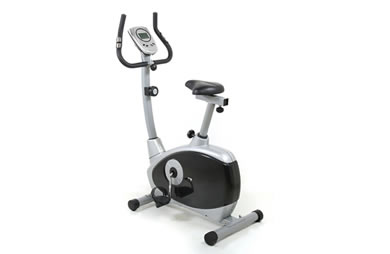|
Getting healthy can be confusing. In any given day, a hundred questions can arise about your diet or how many carbs you should be consuming or how to figure out the appropriate weight to bicep curl or exactly what the difference is between Barre and Pilates. Whether you're a beginner or you've been at it for a while, none of us are experts and trying to figure out the best path to weight loss can be frustrating as a result. But what if you had an expert right in your pocket? Someone to consult along the way who could guide you in the right direction? SparkPeople Premium is an optional, paid upgrade to your SparkPeople account that gives you enhanced tools and support in addition to those you already get for free now. One of those additional features is the ability to email one of SparkPeople's expert coaches once a week. In this email, you can ask a variety of questions about your SparkPeople program and personal goals. In addition to helpful advice, our experts can offer a pat on the back when things are going well—and an ear to listen and offer support when they are not. Our experts answer questions on a wide range of fitness, nutrition and motivation topics. To give you a better idea of the kind of help you could get, we gathered a few examples of questions our members have submitted, as well the expert responses they received. I am tackling morbid obesity. Do you have any specific suggestions on breaking down a 200 pound weight-loss goal?Overall, the best way to accomplish any large, long-term goal is to break it down into smaller "chunks" that you can focus on one at a time. This will usually make doing what you need to do a lot easier, compared to trying to make a lot of major changes overnight. It's also important to make sure these smaller goals focus on your own choices and behaviors, not just on the scale. For example, instead of setting a goal like, "Lose two or three pounds per week", pick a couple of specific changes you'll need to make in your eating and activity in order to make that specific weight loss happen. The weight loss will follow when you start making those changes and stick to them fairly consistently. For example, if you struggle with cravings for high-fat, salty and crunchy foods, start by making a list of the foods you've been eating that fall into that category, beginning with the ones you tend to have most often. Also, organize your list in sections, by meal—for example, one section of the list would include the high-calorie foods you usually have for breakfast, another would be for lunches, then dinners, then snacks. Then, your goal for week one could be to find a few healthier, lower-calorie replacements for whichever food or meal is at the top of the breakfast list, then commit to having one of those instead. Once you have a pretty good routine going with getting your day off to a good start with a solid breakfast, go through this same process for your lunch meal, then dinners and snacks. The order isn't necessarily important. For example, if most of your overeating has been happening at dinner and/or with snacks, you could make your dinner meals or your snacks your first target for change. The point here is to focus on one meal at a time, rather than trying to change everything at once. You may also find that a big part of the problem isn't just the types of foods you've been eating, but also the reasons why you eat. If you think you often end up eating more than you need because it helps you manage feelings, be sure to check out all the resources on SparkPeople related to emotional eating. What's the best way to use my weekly email?You can use these weekly Email a Coach emails to ask any questions you'd like related to your weight-loss efforts. We can help with questions about diet, exercise and motivation. Keep in mind that we're not medical professionals, so we generally can't provide personalized advice about dealing with medical issues or the kind of advice that would involve knowing the details of your medical history. For questions about whether it's safe for you to exercise if you're experiencing a lot of pain related to an injury, recent surgery or a chronic medical condition, for example, we might be able to give you some general information, but you'll probably need to talk to your doctor to get more personalized advice. Many members find it helpful to set some specific goals, let us know what those are and then report in weekly about how they're doing on their goal and/or what kind of problems they're having. All of your weekly emails to us and our responses are saved, so we can refer to them again in the future. That way, you don't have to repeat the same background information over and over again. We can also help you pick some good goals to aim for based on your situation. For example, if you want to lose a specific number of pounds by a certain date, we can tell you whether that's realistic, and if it's not, what might be more realistic. We can also help you translate that weight-loss goal into some more specific action steps based on what you need to do in order to find success. If I'm doing bodyweight workouts, am I going to lose muscle strength if I don't lift?Probably not, as long as the exercises are relatively challenging for you. For example, if you can easily do 15 pushups and 10 leg squats now, but your workout only involves doing 10 pushups and five leg squats, that won't be enough to increase the strength of the muscles involved, or to maintain their strength over time while you're losing weight. On the flip side, if you can only do eight pushups now, and you're challenging yourself to do 10 this week and 12 next week, and so on, that should do the job. It doesn't matter so much what kind of equipment you use, or whether you're doing bodyweight workouts or lifting weights. It's how effectively you're challenging your muscles to do a little more than they can already handle. As long as your bodyweight exercises are doing that, you should be okay. At the other extreme, if you get to the point where you can do 30 push-ups without muscle fatigue, then it becomes more of an endurance exercise than a strength exercise. You may need to find an exercise that challenges those muscles to the point of temporary muscle fatigue within about eight to 15 repetitions, using some kind of added resistance like weights. When you're restricting your calorie intake to lose weight, it can be difficult to tell whether a specific bodyweight workout (like many video workouts or gym-based group workout classes) is providing the kind of challenge you need to minimize muscle and strength loss. It's important to understand that all weight loss involves some muscle loss as well as fat loss. To maintain strength, you want to minimize the muscle loss and maximize the fat loss, which will also help keep your metabolic rate up so you're burning more calories every day. To achieve this, your workout plan should include exercises that get your muscles to the point of temporary fatigue (where you need to rest for a while before continuing) within a fairly small number of repetitions—usually 10 to 12 or so. If your muscles never get to that point of temporary fatigue, they won't go through the process of repair and rebuilding, which is what makes them stronger and protects them, to some extent, from getting used as fuel to replace the calories you're not eating while you're on your diet. So, if you can do this with your bodyweight exercises, that's fine. If those exercises stop doing that for you, it may be time to find some ways to add extra resistance. I am planning to make Meg-herita Pizza and was looking over the recipe and it calls for half a cup of quinoa flour to make the dough. I don't have that on hand, is there anything else I can substitute for quinoa?You could substitute any flour to make the dough. Ideally, a whole-grain flour would come closest to the quinoa, in terms of nutritional value. Adding a little ground or whole flax seed, if you have that, would also help you match the nutrition info in that recipe a little more closely. Changing the type of flour shouldn't have a big effect on the calorie content, though. I am a little bit confused on the calorie ranges. I have mine set for 1,200 to 1,450. If I eat 1,450, will I not lose as much weight or will that put me over my daily limit as far as how many calories I should eat?We give you a calorie range instead of a single number for lots of reasons. One is that how many calories you burn changes every day, based not only on obvious factors like how much exercise and other physical activity you do, but also on things like what you eat. For example, your body will burn fewer calories digesting an ounce of sugar and more when digesting an ounce of whole-grain bread or protein. Even the weather can affect calorie burning. At the same time, there's really no way to know exactly how many calories you would burn each day even if you did exactly the same things every day, unless you spend all your time in a laboratory hooked up to equipment that can directly measure calorie expenditure. Therefore, the formulas used to estimate your calorie expenditure with exercise and other forms of normal daily activity are all based on statistical averages for large numbers of people, determined using factors like age, weight, gender and type of activity. However, since we're each a little bit different, practically no one will actually be that "average person." Your calorie expenditure may be a little higher or lower than predicted. The bottom line is that you'll probably need to do some experimenting to see what works best for you. For example, you may find that on days when you're more active, you need more calories to prevent problems like low energy or excessive appetite. On those days, you may do better by sticking closer to the high end of your range. On extremely active days, you may need even more calories. On other days, the lower end may work fine. Usually, your best guide will be your energy level and appetite, not just your calorie count. Now that you've seen a small sample of what the Email a Coach feature has to offer, consider giving SparkPeople Premium a try! We'll help you stay on track for success all year long. |
Popular Entries
More From SparkPeople
|





















